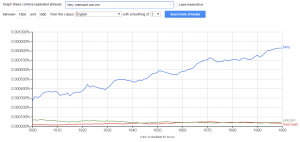From the early 1800s and onward until the end of the Victorian period, there was an influx in literature among the masses as reading became more of a widespread pleasure that was something many could enjoy. With industrialization making its way from London to the world, new things were rapidly becoming a muse for writing. With a newer realistic focus, where did that leave room for the fantasy genre during this time? Through a few choice words, we can go back and see what seemed to stick with the Victorians, and why so much emphasis was placed on one word in particular.
Mythical creatures have a strong history, and most of them seem to be timeless with age. Whether it be angels or centaurs or some other mystical being, the imagination and belief in the lore of these things seems to be something that holds well throughout the ages. During this time, for a seemingly inexplicable reason, the theme of fairies seems to have an incredible popularity over other magical creatures such as unicorns and mermaids. Fairies have had a well established place in the fantasy genre for hundreds of years, with Shakespeare bringing them into a greater popularity in the 1500-1600s. History tends to repeat itself – after researching the Branch Collective to find out why there was such a drastic continuous spike in the popularity of fairies, I found that multiple popular pieces of literature and art were being spurn from the more fantastical side of the Victorian Age. Mermaids and unicorns barely had any written works on them during this time, and seem to go down in popularity even after the Victorian Age – all while the interest in fairies continues to rise.
In a fortunate creative turn, the next century shows an uptake in popularity for all three mythological creatures.
